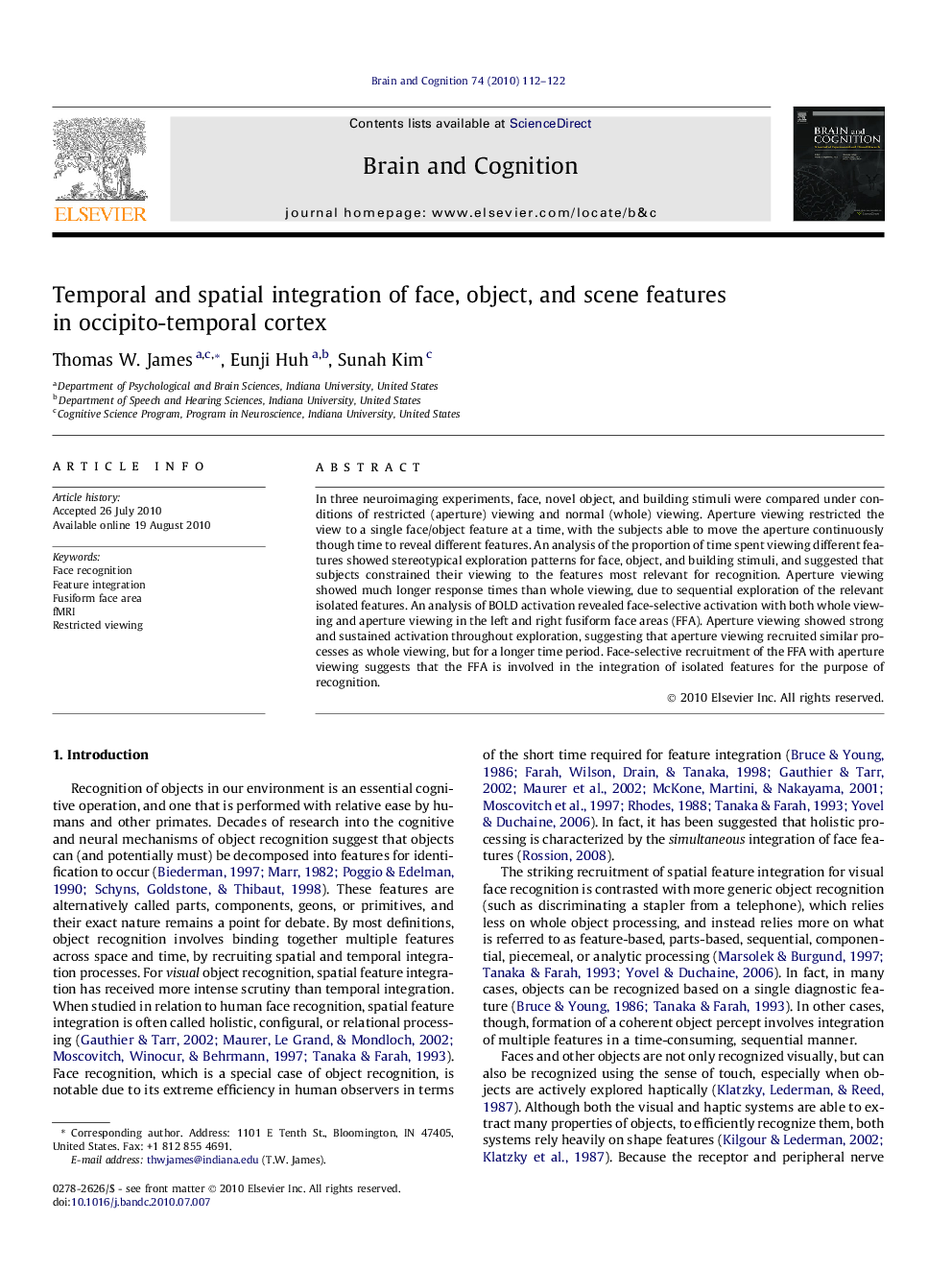| Article ID | Journal | Published Year | Pages | File Type |
|---|---|---|---|---|
| 924848 | Brain and Cognition | 2010 | 11 Pages |
In three neuroimaging experiments, face, novel object, and building stimuli were compared under conditions of restricted (aperture) viewing and normal (whole) viewing. Aperture viewing restricted the view to a single face/object feature at a time, with the subjects able to move the aperture continuously though time to reveal different features. An analysis of the proportion of time spent viewing different features showed stereotypical exploration patterns for face, object, and building stimuli, and suggested that subjects constrained their viewing to the features most relevant for recognition. Aperture viewing showed much longer response times than whole viewing, due to sequential exploration of the relevant isolated features. An analysis of BOLD activation revealed face-selective activation with both whole viewing and aperture viewing in the left and right fusiform face areas (FFA). Aperture viewing showed strong and sustained activation throughout exploration, suggesting that aperture viewing recruited similar processes as whole viewing, but for a longer time period. Face-selective recruitment of the FFA with aperture viewing suggests that the FFA is involved in the integration of isolated features for the purpose of recognition.
